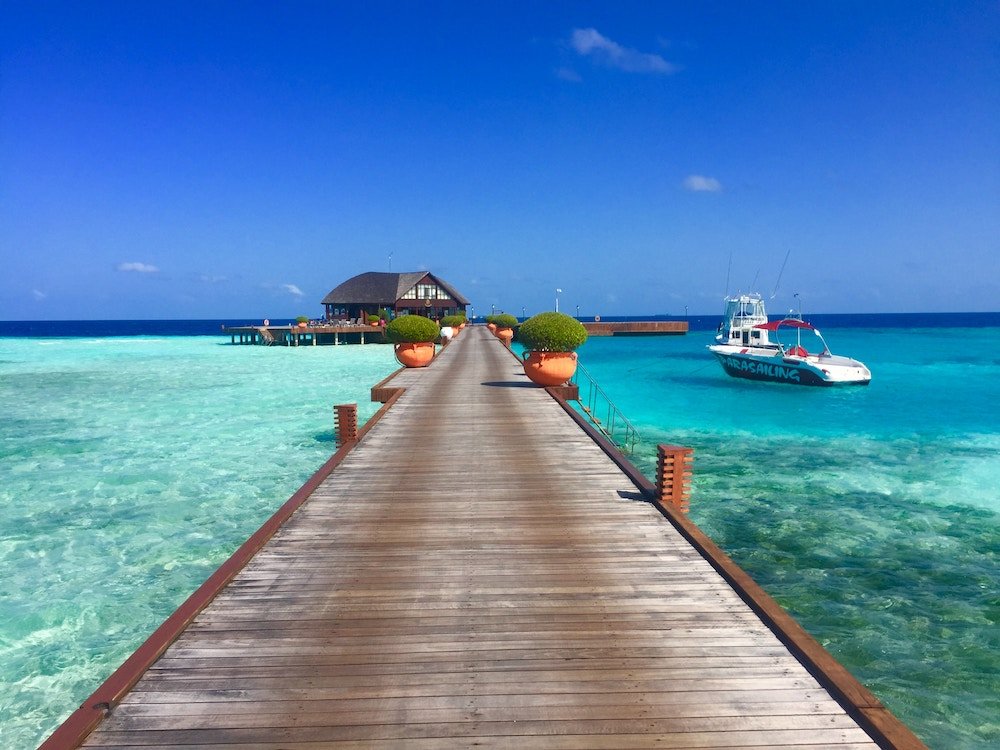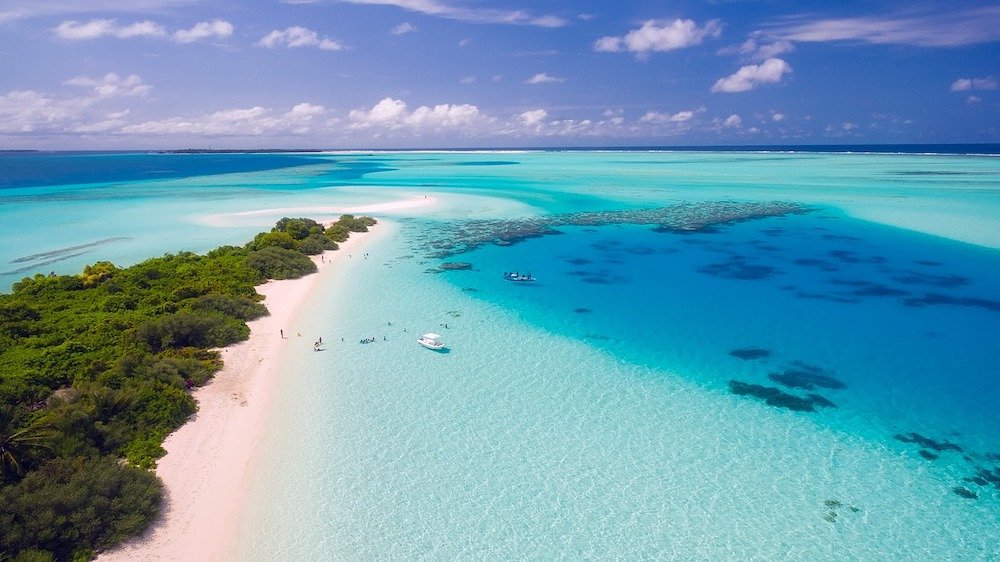
Want to understand which are the 5 best islands in the Indian Ocean?
The Indian Ocean, with its vast expanse of azure waters, stands as a testament to nature’s beauty and diversity.
Stretching between Africa, Asia, Australia, and the Indian subcontinent, this ocean is home to a myriad of islands, each with its own unique charm and allure.
In this article, we delve into the enchanting world of islands in the Indian Ocean, uncovering the reasons why these destinations are a must-visit for any avid traveler.
The Indian Ocean, the third-largest of the world’s oceanic divisions, covers approximately 20% of the Earth’s water surface.
Bounded by 38 countries, this ocean serves as a vital conduit for global trade, connecting nations and cultures.
Its warm waters and diverse ecosystems make it a cradle of life, hosting a wealth of marine species and supporting vibrant coral reefs.
Nestled within the expansive embrace of the Indian Ocean are numerous islands, each encapsulating its own distinct character and natural wonders.
These islands serve as reservoirs of biodiversity, offering unique flora and fauna found nowhere else on Earth.
Beyond their ecological significance, these islands also bear witness to centuries of history, their shores echoing with the tales of trade, colonization, and cultural exchange.
Exploring these islands is not just a journey into the heart of nature but also an immersion into the rich tapestry of human civilization.
From pristine beaches to lush rainforests, the islands of the Indian Ocean beckon adventurers, history enthusiasts, and those seeking respite in paradisiacal surroundings.
As we embark on this virtual voyage through the Indian Ocean, we aim to spotlight five extraordinary islands that deserve a coveted place on every traveler’s bucket list.
Join us as we unravel the secrets of these must-visit islands, providing insights into their natural wonders, cultural treasures, and the adventures that await.
1. Maldives: Jewel of the Indian Ocean
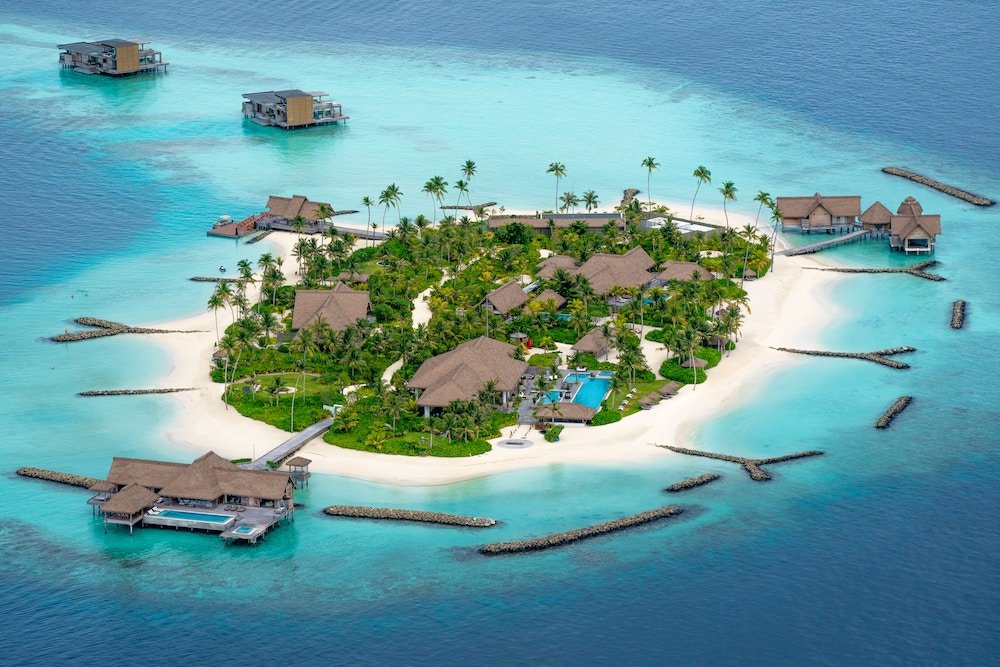
Situated in the heart of the Indian Ocean, the Maldives is an archipelago of 26 atolls, forming a necklace of over 1,000 coral islands.
This tropical paradise is renowned for its crystal-clear turquoise waters, powdery white-sand beaches, and vibrant coral reefs.
Nestled within the equator, the Maldives enjoys a warm tropical climate, making it a year-round destination for sun-seeking travelers.
The Maldives stands out as a haven for marine enthusiasts, boasting some of the world’s most breathtaking coral reefs.
The underwater world here teems with a kaleidoscope of marine life, including vibrant coral formations, schools of tropical fish, and even the chance to spot majestic manta rays and whale sharks.
Adding to the allure of the Maldives is its iconic overwater bungalows.
Perched on stilts above the lagoon, these luxurious accommodations offer unparalleled views of the ocean, providing an intimate and romantic escape.
Immerse yourself in the serenity of the Indian Ocean from the comfort of your private deck, where each sunrise and sunset paints the sky in hues of pink and gold.
Beyond the allure of its natural wonders, the Maldives offers a plethora of activities and attractions for tourists.
Snorkeling and diving enthusiasts can explore vibrant coral gardens, while water sports aficionados can indulge in activities such as kayaking, windsurfing, and jet-skiing.
The Maldives is also a premier destination for world-class spa experiences, where wellness meets luxury against the backdrop of the ocean’s tranquility.
For those seeking cultural immersion, visits to local islands provide insight into the Maldivian way of life.
Explore bustling markets, savor local cuisine, and witness traditional dances that showcase the rich cultural heritage of these islands.
Travel Tips and Best Times to Visit
To make the most of your Maldives experience, consider these travel tips:
- Pack Light: As a tropical destination, casual and lightweight clothing is the norm. Don’t forget essentials like sunscreen, a hat, and comfortable footwear for beach walks.
- Respect Local Customs: The Maldives is a Muslim-majority country, so it’s essential to respect local customs and dress modestly when outside of resort areas.
- Choose the Right Atoll: Each atoll in the Maldives has its own unique charm. Research and choose the atoll that aligns with your interests, whether it be vibrant marine life, secluded luxury, or cultural experiences.
- Best Times to Visit: The Maldives experiences two main seasons – the dry northeast monsoon (December to March) and the wet southwest monsoon (May to October). The dry season is considered the best time to visit for optimal weather conditions.
2. Seychelles: A Tropical Paradise

Nestled in the embrace of the Indian Ocean, Seychelles stands as an archipelago of 115 islands, each a gem in its own right.
This tropical haven is renowned for its pristine beaches, lush landscapes, and a rich blend of cultures that paint a vibrant tapestry across the islands.
Seychelles’ archipelago beckons travelers with promises of serenity, natural beauty, and a harmonious coexistence between humanity and nature.
Seychelles boasts some of the world’s most breathtaking beaches, each seemingly plucked from a postcard.
Soft, powdery sands meet turquoise waters, creating an idyllic setting for relaxation and exploration.
Anse Lazio on Praslin Island and Anse Source d’Argent on La Digue are renowned for their pristine beauty, with towering granite rock formations providing a dramatic backdrop.
These unique formations, sculpted by nature over centuries, add a touch of surrealism to Seychelles’ already enchanting shores.
The underwater world surrounding Seychelles is a paradise for marine enthusiasts. Coral reefs teem with life, offering vibrant displays of fish, sea turtles, and other marine creatures.
Nature reserves, such as the Vallée de Mai on Praslin, provide a sanctuary for rare species like the coco de mer palm, a botanical wonder found only in Seychelles.
Bird Island, a dedicated nature reserve, is a haven for birdwatchers, with a plethora of avian species to observe.
Seychelles is not just a haven for nature lovers; it also offers a rich tapestry of cultural experiences.
Explore the colorful markets of Victoria, the capital, where the scent of exotic spices mingles with the vibrant hues of tropical fruits and flowers.
Immerse yourself in Creole culture through traditional music and dance performances, and indulge in the island’s diverse cuisine.
Seychellois dishes, influenced by African, Indian, and French culinary traditions, showcase the freshest seafood and locally grown ingredients.
Travel Tips and Best Times to Visit
For a seamless Seychelles experience, consider the following travel tips:
- Island Hopping: Explore multiple islands to truly appreciate the diversity of Seychelles. Each island has its own unique charm and attractions.
- Snorkeling and Diving: Don’t miss the opportunity to explore the vibrant underwater world. Bring your snorkeling gear or join a dive excursion to witness the kaleidoscope of marine life.
- Local Etiquette: Respect the local customs and traditions. Seychelles is a melting pot of cultures, and understanding and appreciating the local way of life enhances your travel experience.
- Best Times to Visit: Seychelles enjoys a year-round tropical climate. The months of April, May, October, and November are considered ideal, with pleasant temperatures and lower humidity. The northwest trade winds bring calm seas during this period.
3. Mauritius: The Multicultural Gem

Mauritius, a jewel in the Indian Ocean, is a testament to the harmonious coexistence of diverse cultures and a rich history.
Once a melting pot of trade routes, the island’s history is marked by colonization and the blending of European, African, Indian, and Chinese influences.
This multicultural heritage has shaped a unique identity for Mauritius, making it a captivating destination for those seeking a tapestry of history and cultural diversity.
Mauritius is blessed with landscapes that seamlessly blend the exotic with the picturesque.
Pristine beaches, such as Trou aux Biches and Belle Mare, boast powdery white sands that gently meet the turquoise waters of the Indian Ocean.
Inland, the island reveals a different facet, characterized by lush greenery and the remnants of ancient volcanic activity.
The dormant volcanic craters, notably the Trou aux Cerfs, offer panoramic views of the island’s interior, adding a touch of geological wonder to the scenic beauty.
Mauritius invites adventure enthusiasts with a myriad of water activities.
The coral reefs that fringe the island provide ideal conditions for snorkeling and diving, allowing visitors to explore vibrant marine life beneath the surface.
Chase waterfalls in the lush landscapes, with Chamarel’s Seven Colored Earths and the cascading Tamarind Falls offering a refreshing and visually stunning escape into nature.
Mauritius’ multiculturalism is not only evident in its history but also in its vibrant present.
Explore the markets of Port Louis, the capital, where the aromas of spices mingle with the vibrant colors of tropical fruits and textiles.
The island’s diverse communities have contributed to a rich tapestry of cuisines, with Creole, Indian, Chinese, and European flavors coming together in a delightful fusion.
Indulge in street food delights, such as dholl puri and samosas, and savor seafood delicacies prepared with local spices.
Travel Tips and Best Times to Visit
To make the most of your visit to Mauritius, consider the following travel tips:
- Explore the Inner Regions: While the beaches are undoubtedly captivating, venture into the central highlands to discover the island’s volcanic craters, lush forests, and hidden waterfalls.
- Local Transportation: Embrace the local transportation options, including buses and taxis, to explore the island’s nooks and corners. It’s a great way to interact with locals and experience the island’s authenticity.
- Cultural Sensitivity: Mauritius’ population is diverse, representing various religions and customs. Respect local traditions, particularly when visiting religious sites, and dress modestly.
- Best Times to Visit: The months of May to December offer pleasant temperatures and lower humidity, making it an ideal time to explore the island. Be aware that January to March can bring cyclones, so it’s advisable to plan your visit outside of this period.
4. Madagascar: Biodiversity Hotspot

Madagascar, often referred to as the “eighth continent,” stands as a biodiversity hotspot unlike any other.
Separated from the African mainland millions of years ago, this island nation has evolved in isolation, giving rise to a plethora of unique flora and fauna found nowhere else on Earth.
From charismatic lemurs to peculiar chameleons and rare orchids, Madagascar’s ecosystems boast a diversity that captures the imagination of naturalists and adventure seekers alike.
Protecting the extraordinary biodiversity, Madagascar is home to a network of national parks and wildlife reserves.
Among them, Andasibe-Mantadia National Park is renowned for its indri lemurs and diverse birdlife.
The Avenue of the Baobabs, a natural wonder, showcases the iconic, towering baobab trees.
Isalo National Park presents otherworldly landscapes of sandstone formations and canyons, offering a unique backdrop to the island’s biodiversity.
Beyond its natural wonders, Madagascar is a tapestry of cultural richness and indigenous traditions.
The Malagasy people, with their warm hospitality, contribute to the unique charm of the island.
Traditional ceremonies, music, and dance provide a glimpse into the cultural tapestry of Madagascar, with influences from Africa, Asia, and Europe shaping a truly distinct identity.
For those seeking adventure, Madagascar offers a playground of opportunities.
Trek through dense rainforests in search of elusive wildlife, embark on wildlife safaris to spot lemurs and chameleons, and explore the Tsingy de Bemaraha, a UNESCO World Heritage site featuring dramatic limestone formations.
The island’s diverse landscapes, from pristine beaches to rugged mountains, cater to outdoor enthusiasts eager to experience the thrill of exploration.
Travel Tips and Best Times to Visit
To maximize your adventure in Madagascar, consider the following travel tips:
- Guided Tours: Engage local guides when exploring national parks to enhance your wildlife viewing experience and gain insights into the unique ecosystems.
- Pack Appropriately: Given the diverse landscapes, pack accordingly. Comfortable hiking shoes, lightweight clothing, and insect repellent are essential for exploring Madagascar’s natural wonders.
- Respect Local Customs: Madagascar’s cultural diversity is reflected in various customs and traditions. Be respectful when interacting with locals and seek permission before taking photographs.
- Best Times to Visit: The dry season, from April to October, is considered the best time to visit Madagascar. During this period, the weather is pleasant, and wildlife sightings are more common. Be aware of peak tourist seasons and plan accordingly for a more intimate experience.
5. Zanzibar: Spice Islands’ Charms
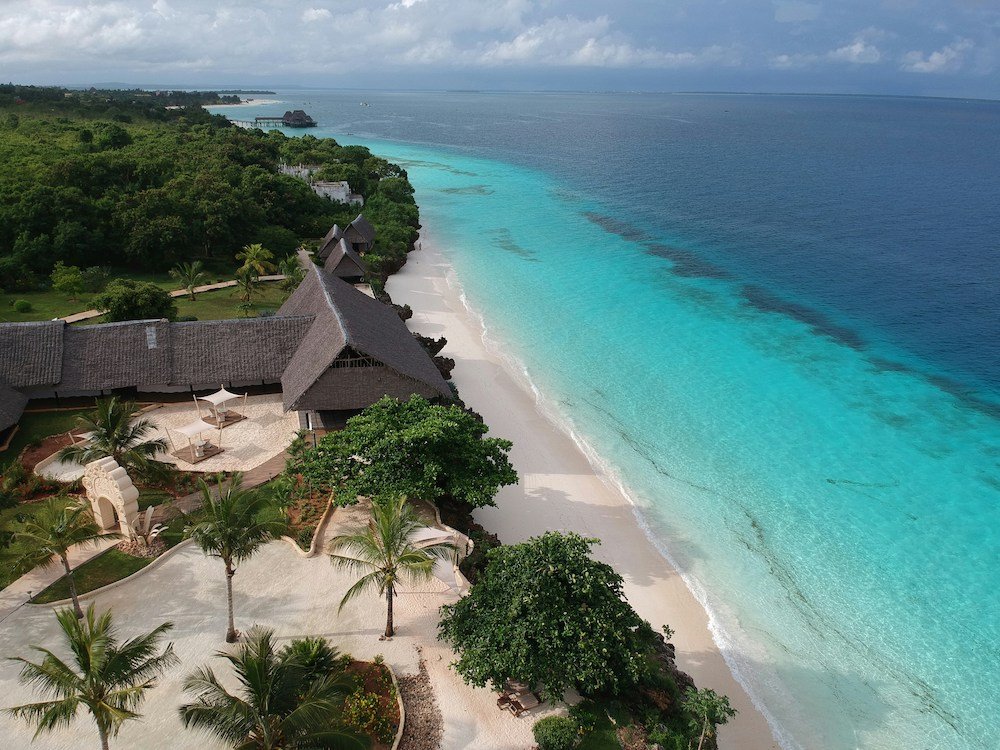
Zanzibar, an archipelago off the coast of Tanzania, holds a captivating history shaped by centuries of trade, cultural exchange, and the influences of various civilizations.
Known as the Spice Islands, Zanzibar has been a crossroads of cultures, blending African, Arab, Indian, and European influences.
The rich tapestry of its history is woven into the fabric of daily life, making Zanzibar a unique and enchanting destination.
Zanzibar’s association with spices is legendary, and a visit to the island is incomplete without exploring its spice plantations.
Embark on a guided tour to witness the cultivation of cloves, cinnamon, vanilla, and other aromatic spices.
Engage your senses as you touch, smell, and taste the various spices, gaining insights into their cultivation and importance in Zanzibar’s history and economy.
Stone Town, the historic heart of Zanzibar City, is a UNESCO World Heritage site renowned for its labyrinthine streets, historic buildings, and cultural significance.
Explore the narrow alleyways lined with intricately carved wooden doors, reflecting Swahili, Indian, and Arabian influences.
Visit landmarks such as the House of Wonders and the Old Fort, witnessing the architectural treasures that echo Zanzibar’s diverse past.
Zanzibar’s pristine beaches and turquoise waters are a haven for relaxation and water-based activities.
Picture-perfect beaches, including Nungwi and Kendwa, offer idyllic settings for sunbathing and enjoying the gentle sea breeze.
Explore the underwater world through snorkeling or diving, where vibrant coral reefs and marine life await.
For those seeking more adventure, water sports such as kiteboarding and windsurfing are readily available.
Travel Tips and Best Times to Visit
To make the most of your Zanzibar experience, consider the following travel tips:
- Cultural Sensitivity: Zanzibar is predominantly Muslim, and it’s essential to respect local customs. Dress modestly, particularly when exploring Stone Town and visiting religious sites.
- Spice Tour: Don’t miss the opportunity to visit a spice plantation. Engage with local guides who can provide insights into the cultivation and uses of various spices.
- Historical Exploration: Take the time to wander through Stone Town’s historic streets. Hire a local guide to uncover the hidden gems and stories behind the architectural marvels.
- Beach Essentials: Pack essentials such as sunscreen, a hat, and comfortable beachwear. Zanzibar’s coastal climate is ideal for beach activities, so come prepared for sun-soaked days.
- Best Times to Visit: Zanzibar enjoys a tropical climate. The dry season, from June to October, is considered the best time to visit, with pleasant temperatures and lower humidity. December to February is another good period, though it may experience brief showers.
Conclusion
Our exploration of the Indian Ocean has uncovered a tapestry of natural wonders, cultural riches, and adventure opportunities across five must-visit islands.
From the luxurious overwater bungalows of the Maldives to the pristine beaches and granite formations of Seychelles, the multicultural gem of Mauritius, the biodiversity hotspot of Madagascar, and the spice-scented charms of Zanzibar, each island beckons with its unique allure.
As we reflect on these extraordinary destinations, it’s evident that the Indian Ocean is not just a body of water but a cradle of diverse experiences.
Whether you seek underwater adventures in the coral reefs, cultural immersions in historic towns, or the thrill of exploring lush landscapes, the islands in the Indian Ocean offer a rich palette of experiences.
From the vibrant colors of Seychelles’ coral gardens to the cultural treasures of Stone Town in Zanzibar, diversity is the common thread that weaves through these island paradises.
Additional Tips and Resources
A. Packing Tips for Tropical Island Travel
- Lightweight Clothing: Pack breathable and lightweight fabrics suitable for tropical climates.
- Swimwear: Essential for beach days and water activities.
- Sun Protection: Bring sunscreen, a hat, and sunglasses to shield against the tropical sun.
- Insect Repellent: Especially important for destinations with tropical forests.
- Comfortable Footwear: Sandals, flip-flops, and comfortable walking shoes for various terrains.
B. Sustainable Tourism Practices
- Respect Local Customs: Learn and respect the cultural norms and traditions of the destinations you visit.
- Minimize Plastic Use: Carry a reusable water bottle and say no to single-use plastics.
- Support Local Communities: Choose locally-owned accommodations, restaurants, and tour operators.
- Conserve Energy and Water: Practice responsible usage of resources during your stay.
- Leave No Trace: Ensure that you leave natural and cultural sites as you found them.
C. Links to Relevant Travel Guides and Official Tourism Websites
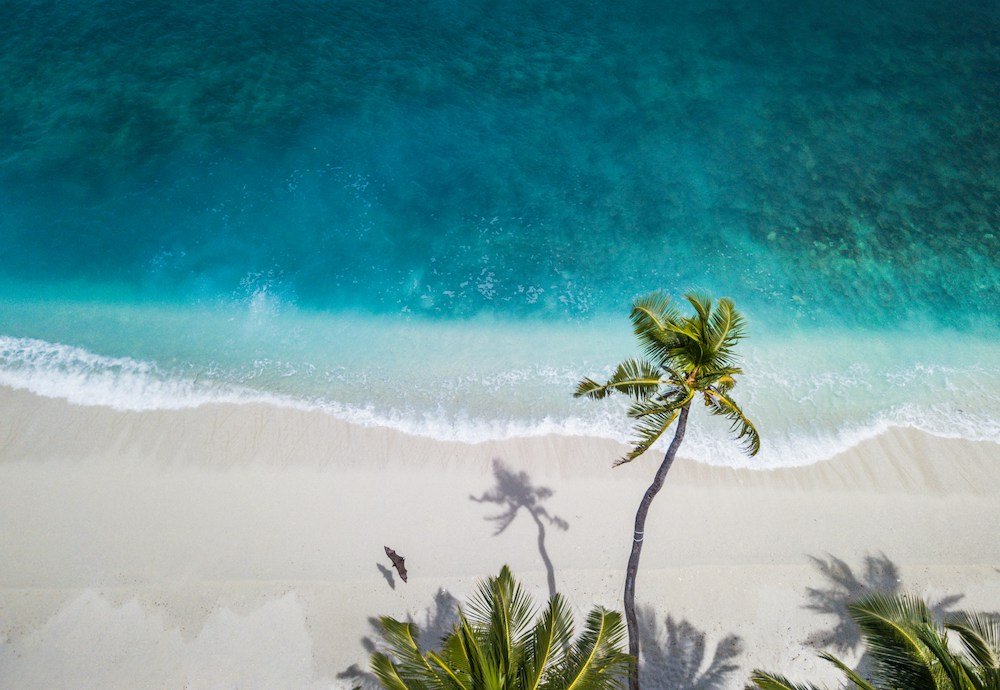
FAQ’s About Islands in the Indian Ocean:
What are the islands found in the Indian Ocean?
The Indian Ocean is home to numerous islands, including but not limited to:
- Maldives
- Seychelles
- Mauritius
- Madagascar
- Zanzibar (part of Tanzania)
- Sri Lanka
- Andaman and Nicobar Islands (India)
- Comoros
- Mayotte (overseas department of France)
- Reunion (overseas department of France)
- Chagos Archipelago (British Indian Ocean Territory)
- Socotra (Yemen)
What Australian islands are in the Indian Ocean?
Australia has several islands located in the Indian Ocean, including:
- Christmas Island
- Cocos (Keeling) Islands
Which is the 2 largest island in the Indian Ocean?
The second-largest island in the Indian Ocean is Madagascar.
What countries are in the Indian Ocean?
Several countries border or are located within the Indian Ocean region. Some of these include:
- India
- Sri Lanka
- Maldives
- Indonesia
- Malaysia
- Thailand
- Myanmar
- Bangladesh
- Somalia
- Kenya
- Tanzania
- Comoros
- Madagascar
- Seychelles
- Mauritius
- Reunion (overseas department of France)
- Mozambique
- South Africa
- Yemen
- Oman
- Saudi Arabia
- Maldives
- Australia (Christmas Island and Cocos Islands)
- Chagos Archipelago (British Indian Ocean Territory)
- Andaman and Nicobar Islands (India)
- Mayotte (overseas department of France)
- Socotra (Yemen)
